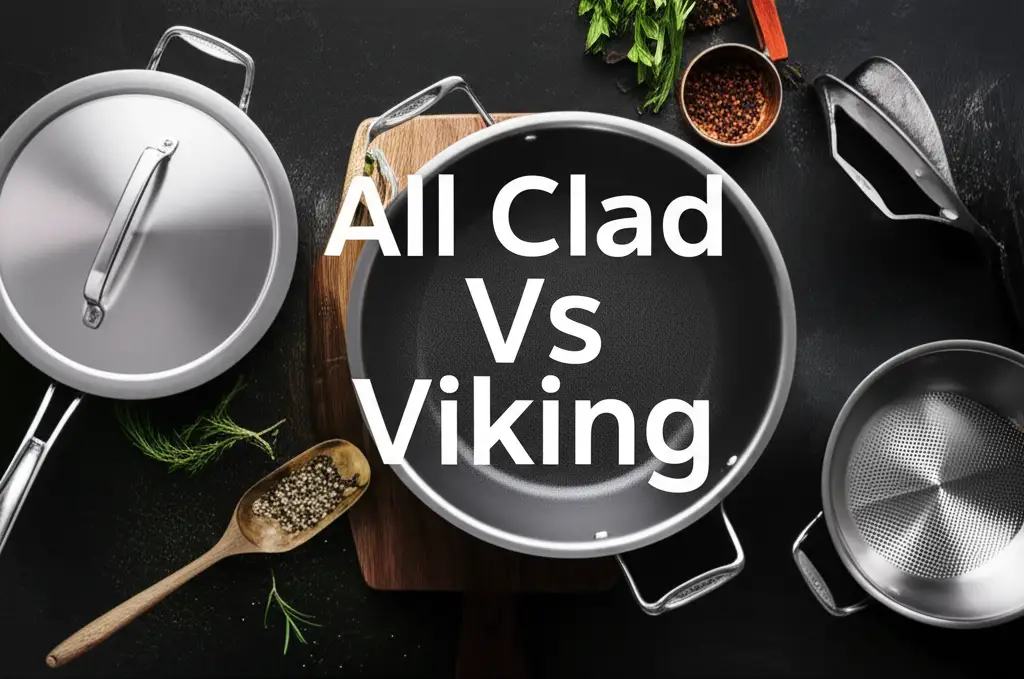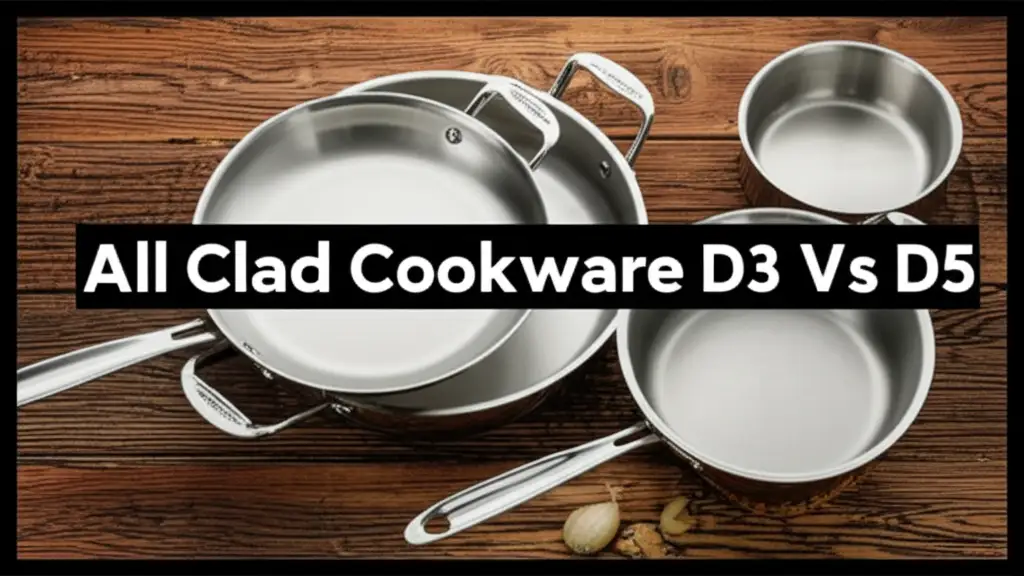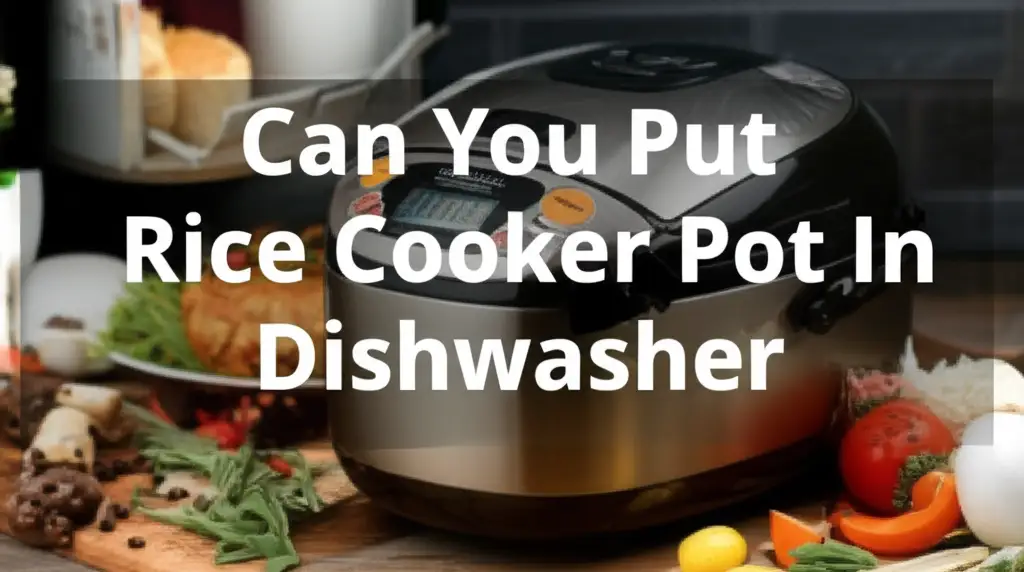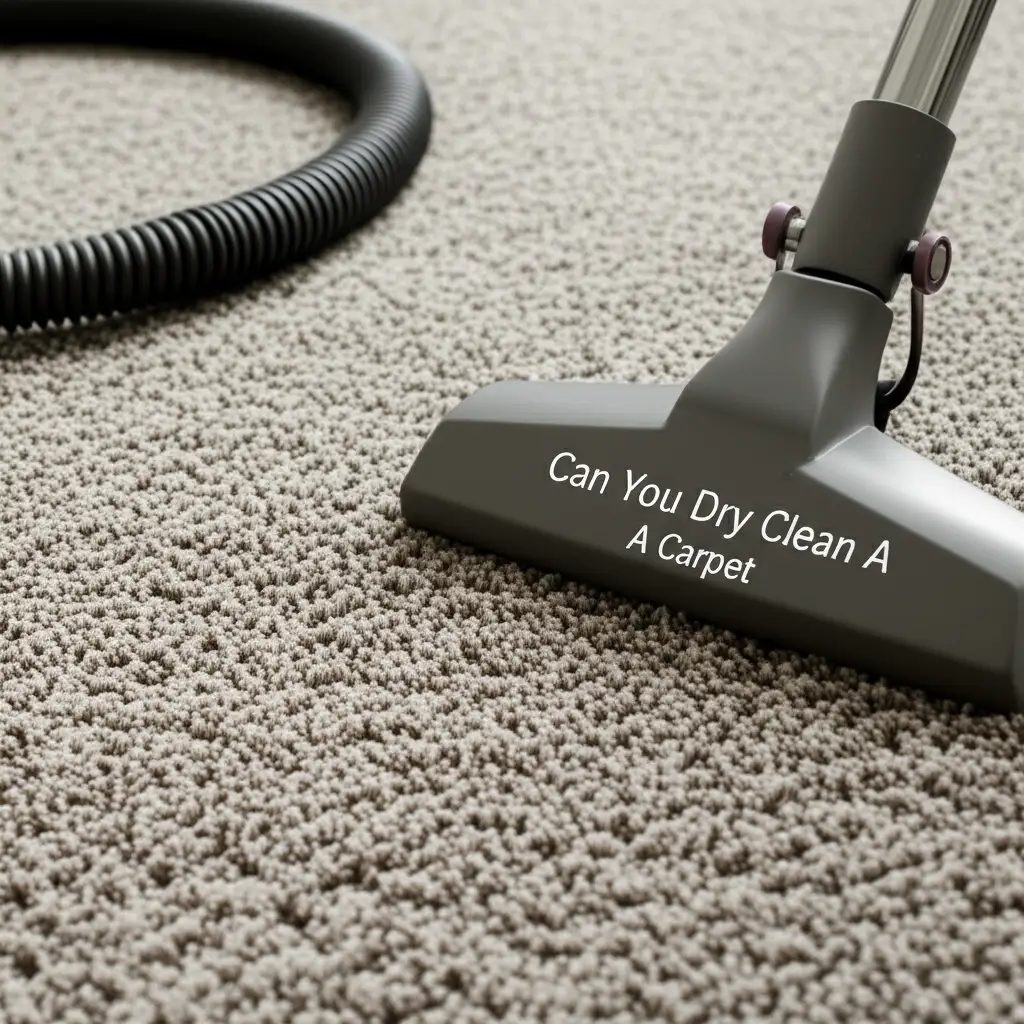· Elira Thomsen · Cookware Comparison · 17 min read
All Clad Vs Viking

All Clad Vs Viking: Choosing Your Premium Cookware
Have you ever wondered if investing in premium cookware truly elevates your cooking? I certainly have. As a home chef who spends a lot of time in the kitchen, I know the right tools make a big difference. Today, we delve into the world of high-end pots and pans. We will explore the “All Clad Vs Viking” debate.
These two brands stand out in the premium cookware market. Both promise excellent performance and lasting quality. But they offer different approaches to design and function. This article breaks down everything you need to know. We will look at their construction, heat distribution, durability, and user experience. By the end, you will have a clear picture. You can then choose the perfect set for your kitchen needs.
Takeaway:
- All-Clad excels in even heat distribution and precise temperature control due to its fully clad construction. It is a long-term investment.
- Viking offers robust build quality with ergonomic handles, often appealing to those who prefer a professional kitchen feel. It combines performance with user comfort.
- Your choice depends on priorities: extreme precision and classic design (All-Clad) or comfort and professional aesthetics (Viking).
A Clear Answer:
Choosing between All-Clad and Viking depends on your cooking style and priorities. All-Clad often leads in heat precision with its full-clad designs. Viking counters with comfortable handles and robust construction, bringing professional kitchen standards to your home.
Understanding Cookware Construction: All-Clad’s Multi-Ply Excellence
When you look at premium cookware, the term “construction” is very important. It tells you how the pan is built. All-Clad is famous for its bonded, multi-ply construction. This means different layers of metal are pressed together. They form a single, strong piece of cookware.
All-Clad typically uses an outer layer of stainless steel. This steel is durable and non-reactive. Inside these layers, they place metals like aluminum or copper. These inner layers are excellent at conducting heat. They spread heat evenly across the entire pan, from the bottom up the sides. This design eliminates hot spots. Hot spots can burn food in some areas while other parts remain undercooked. This even heating is a major benefit for consistent cooking results.
The most common types include D3 (tri-ply), D5 (five-ply), and Copper Core (five-ply with a copper layer). Each type offers specific benefits. D3 is a classic choice for all-around cooking. D5 provides even greater stability and warp resistance. Copper Core offers extremely rapid heat response. This careful layering is what makes All-Clad a favorite among many chefs.
- All-Clad Construction Types:
- D3 (Tri-Ply): Stainless steel exterior, aluminum core, stainless steel interior. This is their foundational design. It offers excellent heat distribution and durability. It works well for everyday cooking tasks.
- D5 (Five-Ply): Adds alternating layers of stainless steel and aluminum. This construction provides even more consistent heat. It is also more warp-resistant. It heats slower than D3 but holds temperature very well.
- Copper Core: Features a thick copper layer surrounded by aluminum and stainless steel. Copper is a superior heat conductor. This design allows for incredibly fast heating and precise temperature changes. This is ideal for delicate sauces or searing meats.
The full cladding on All-Clad pans means the heat spreads not just across the bottom. It also goes up the sides. This ensures food cooks evenly from all angles. It is why a pan of soup will simmer uniformly. It means a steak will sear perfectly from edge to edge. This construction method truly sets All-Clad apart in the kitchen.
Viking Cookware’s Professional Heritage and Design
Viking cookware draws its inspiration from professional kitchens. The brand is well-known for its high-performance kitchen appliances. Their cookware line reflects this same commitment to professional-grade tools. Viking aims to bring commercial kitchen quality to the home cook. This means their cookware is often built to withstand heavy use. It provides excellent cooking results.
Like All-Clad, Viking uses multi-ply construction. Their lines feature tri-ply, 5-ply, and even 7-ply designs. These layers also combine stainless steel with aluminum for optimal heat transfer. Viking offers different series, such as Professional, Contemporary, and Culinary. Each series has unique features. The Professional series emphasizes durability and heat performance. The Contemporary series often features a sleek, polished look.
Viking also pays close attention to ergonomics. Their handles are often designed for comfort. They stay cool on the stovetop. This is a common point of difference when comparing “All Clad Vs Viking.” The handles provide a secure grip. This is important when moving heavy pots filled with food. Viking’s design philosophy blends function with aesthetic appeal. They offer a robust feel that many home cooks appreciate.
- Key Design Elements of Viking Cookware:
- Ergonomic Handles: Many Viking handles are hollow or riveted in a way that keeps them cool. They have a comfortable, rounded shape. This design reduces strain during cooking. This is a significant comfort factor.
- Flared Rims: Most Viking pots and pans feature flared rims. These rims make pouring liquids easy. They prevent drips and spills. This small detail improves user experience.
- Oven Safe: Viking cookware is generally oven-safe to very high temperatures. This allows for seamless transitions from stovetop to oven. It is useful for finishing dishes.
- Induction Compatibility: Most Viking lines are fully induction compatible. This makes them versatile for all types of cooktops.
- Professional Aesthetic: The overall look of Viking cookware is often sleek and substantial. It gives a sense of professional-grade equipment. This appeals to many home chefs.
Viking aims to equip you with tools that perform reliably. They want you to feel confident in your cooking. Their construction supports consistent results. Their design choices enhance user comfort. This focus on both performance and user experience makes Viking a strong contender in the premium cookware market.
Heat Distribution and Cooking Performance: A Direct Comparison
When evaluating “All Clad Vs Viking,” heat distribution is a critical factor. Both brands use multi-clad construction to achieve even heating. However, there are subtle differences in their approach and materials. These differences can affect your cooking results. Understanding these nuances helps you choose the right tools.
All-Clad is known for its precise and consistent heat. Its fully clad design means the aluminum or copper core extends from the base all the way up the sides of the pan. This ensures that every part of the cooking surface receives heat uniformly. For delicate sauces, precise searing, or slow simmers, All-Clad performs exceptionally well. You will notice fewer hot spots. This means your food cooks evenly, reducing the risk of burning in one spot while undercooking elsewhere. The quick responsiveness of the copper core lines allows for fine adjustments to temperature. This precision is a hallmark of All-Clad.
Viking also delivers excellent heat distribution. Their multi-ply construction, often with thicker aluminum layers, provides robust heat retention. This means once the pan heats up, it stays hot. This is great for searing meats and achieving a perfect crust. Some users report that Viking pans might take a moment longer to heat up initially due to their mass. But they hold their temperature with impressive stability. This can be an advantage for consistent high-heat cooking. The heat spreads well across the bottom and up the sides. This ensures thorough cooking. Both brands are designed to prevent warping under high heat. This maintains their flat cooking surface over time. This is essential for good performance on all cooktop types, including induction.
All-Clad’s Heating Profile:
- Evenness: Superior edge-to-edge heat distribution due to full cladding.
- Responsiveness: Quick to heat up and respond to temperature changes, especially Copper Core.
- Precision: Ideal for tasks needing exact temperature control like delicate reductions or perfect browning.
Viking’s Heating Profile:
- Heat Retention: Excellent at holding heat once hot, beneficial for searing.
- Robustness: Often feels heavier and more substantial, built for sustained high heat.
- Consistency: Provides reliable, even cooking across the pan surface, mirroring professional demands.
Both brands provide a great cooking experience. All-Clad might offer a slight edge in pure heat precision and responsiveness. Viking offers robust heat retention and a substantial feel. The best choice depends on your primary cooking tasks. Do you prioritize quick, fine-tuned adjustments or sustained, even heat for heavy-duty cooking? This decision influences your daily kitchen experience.
Durability, Maintenance, and Longevity
Investing in premium cookware means you expect it to last. Both All-Clad and Viking are known for their durability. They build their products to withstand years of use. Understanding their materials and care instructions is key to maximizing their lifespan. This factor is important in the “All Clad Vs Viking” comparison.
Both brands primarily use high-quality stainless steel for their cooking surfaces and exteriors. Stainless steel is known for its resistance to corrosion, rust, and stains. It is also non-reactive, meaning it will not leach flavors into your food. This material stands up well to high heat. It also resists warping. All-Clad’s bonded construction makes their pans extremely strong. They are built to maintain their shape and integrity over time. Viking also uses robust construction methods. They often use thicker gauge stainless steel in some lines. This gives their pans a very solid feel. Both brands can handle the demands of busy kitchens.
When it comes to maintenance, both All-Clad and Viking recommend hand washing for best results. While some pieces might be technically dishwasher safe, harsh detergents can dull the finish over time. Hand washing preserves the shine and prolongs the life of your cookware. For stubborn spots, barkeeper’s friend is a popular choice among users of both brands. It effectively cleans stainless steel without scratching. Proper care involves allowing pans to cool before washing them. This prevents thermal shock. Thermal shock can cause warping. Avoiding metal utensils can also prevent scratches. These practices ensure your cookware looks good and performs well for many years.
Durability Highlights:
- All-Clad: Known for warp resistance due to full cladding. Its multi-layer bonding creates a highly stable structure.
- Viking: Often features heavy-gauge stainless steel for exceptional sturdiness. It is built to withstand rigorous professional use.
Maintenance Tips for Both Brands:
- Hand Wash Recommended: Preserve the finish and longevity.
- Avoid Harsh Abrasives: Use soft sponges or cloths.
- Clean Immediately: Prevent food from drying onto the surface.
- Use Barkeeper’s Friend: Great for removing discoloration or stubborn stains.
- Avoid Overheating Empty Pans: Can cause blue or brown discoloration.
Both All-Clad and Viking offer limited lifetime warranties against defects. This shows their confidence in their product quality. A lifetime warranty provides peace of mind for your investment. With proper care, either brand will serve you well for decades. Their longevity makes them a worthwhile investment for serious cooks.
Ergonomics, Handles, and User Experience
The feel of cookware in your hand matters a lot. This is especially true during long cooking sessions. Ergonomics, handles, and overall user experience play a big role in your daily cooking enjoyment. This is where the “All Clad Vs Viking” comparison shows some distinct differences.
All-Clad has a reputation for its somewhat divisive handle design. Their signature handles are often thin and concave. Some users find them uncomfortable, particularly when lifting heavy pots. They can feel sharp in the hand, especially if you are not used to them. However, many loyal All-Clad users say they adapt to the handles over time. They even find them secure once accustomed. The handles are riveted firmly to the pan. This ensures durability. While the design is iconic, it is definitely a “try before you buy” feature for some. The lids fit snugly. The overall balance of the pans is generally excellent, even with the unique handle design.
Viking, on the other hand, puts a strong emphasis on ergonomic handles. Their handles are typically wider, more rounded, and designed to stay cooler on the stovetop. This provides a more comfortable and secure grip. Many users find Viking handles a significant improvement over All-Clad’s in terms of comfort. They are often hollow or designed with a V-shape near the pan body to dissipate heat. This reduces the risk of burning your hand. Viking also often incorporates flared rims for drip-free pouring. This adds to the overall user convenience. The substantial weight of Viking pans, combined with comfortable handles, gives a feeling of professional control. Just as a chef selects the right knife for comfort and control, choosing the right cookware handle impacts your experience. When selecting kitchen tools, whether it’s a 8-vs-10-inch-chef-knife for chopping or a pan for sautéing, handle design is paramount. Similarly, the choice between a 6-inch-vs-8-inch-chef-knife or a 5-inch-vs-7-inch-santoku-knife often boils down to how it feels in your hand during extended use.
All-Clad Handle Design: A Closer Look
All-Clad’s handles are a point of discussion. They are made from polished stainless steel. They have a distinctive concave shape. This design aims to provide a secure grip, especially when wet or oily. However, their thin profile can dig into the hand when the pan is heavy. Some users use a kitchen towel for extra padding. They are oven-safe and virtually indestructible.
Viking Handle Innovation: Comfort in Hand
Viking’s handles are designed with user comfort in mind. They are often thicker and more rounded. Many feature a “stay-cool” design through hollowing or specific attachment points. This allows for comfortable handling even during prolonged cooking. Their robust rivets ensure a secure attachment. The overall feel of Viking handles often wins praise for comfort.
Ultimately, your preference for handle design is personal. It is worth trying out both brands in person if possible. See which one feels best in your hand. Both brands provide durable, functional handles. The comfort factor is the main differentiator.
Price Point and Value Proposition
The cost of premium cookware can be a significant investment. Both All-Clad and Viking fall into the high-end category. Their price points reflect their quality construction and performance. Understanding the value proposition of each brand helps you make an informed decision. This is a key aspect of the “All Clad Vs Viking” comparison.
All-Clad is generally considered the more expensive of the two brands. Their D3 and D5 lines carry a premium price tag. The Copper Core line is even more expensive. This cost reflects their unique fully-clad bonding process. This process ensures exceptional heat distribution and durability. For many home cooks and professional chefs, the precise performance and lifetime durability justify the higher upfront cost. All-Clad cookware often retains its value well. This makes it a long-term investment. People buy All-Clad expecting it to last a lifetime. They often pass it down through generations.
Viking offers a competitive price point, often slightly less than All-Clad for comparable pieces or sets. This can make Viking a very attractive option for those seeking professional-grade performance without the absolute top-tier price. Viking’s value comes from its robust build quality. It provides ergonomic designs. It brings professional kitchen aesthetics to the home. Their various lines, such as Professional and Contemporary, can also have different price points. This allows for some flexibility depending on your budget and desired features. Viking still represents a significant investment. But it often comes at a more accessible premium.
All-Clad: Is the Investment Worth It?
For many, All-Clad is the gold standard for stainless steel cookware. Its price reflects its superior heat performance and longevity. If precise temperature control and unwavering durability are your top priorities, the investment in All-Clad is often worth it. It is cookware that performs flawlessly for decades. It saves money in the long run by not needing replacements. Many professional chefs rely on All-Clad. This speaks volumes about its quality.
Viking: Professional Performance at a Competitive Price
Viking positions itself as a brand that offers professional-level performance at a slightly more competitive price. If you appreciate comfortable handles and a robust, professional aesthetic, Viking provides excellent value. You get high-quality multi-ply construction and strong performance. It is still a premium brand. But it may offer a better entry point for some. Viking’s focus on user comfort and sturdy build makes it a strong contender for everyday use. It also works well for entertaining.
Ultimately, both brands offer significant value for their price. Your decision depends on your budget and what features you prioritize most. Consider how often you cook. Think about the types of dishes you make. Then, weigh the cost against the long-term benefits and features of each brand.
Inducting Your Decision: Compatibility and Specific Use Cases
When making your final choice, considering specific use cases and cooktop compatibility is important. Both All-Clad and Viking are premium brands. They generally work across various cooking surfaces. However, knowing the details helps solidify your decision in the “All Clad Vs Viking” debate.
Induction cooktops have become very popular. They require cookware with magnetic bases. Both All-Clad and Viking largely meet this requirement. Most of their multi-ply stainless steel lines are induction compatible. All-Clad’s D3, D5, and Copper Core lines are all suitable for induction. The D5 line, with its extra stainless steel layer, is particularly well-suited. Viking’s Professional and Contemporary series also work seamlessly on induction surfaces. Always double-check the product specifications for exact models. This ensures full compatibility. You can typically find this information on the product listing or the bottom of the pan.
Beyond compatibility, consider the best uses for each brand based on their strengths. All-Clad excels in situations requiring precise heat control. If you often make delicate sauces, perfectly sear scallops, or simmer dishes for long periods, All-Clad’s even heating and responsiveness are unparalleled. Its lighter weight compared to some Viking lines can also be an advantage for agile cooking. It is a fantastic choice for everyday cooking tasks where consistency is key. It performs beautifully for both quick meals and elaborate dinners.
Viking’s robust construction and heat retention make it ideal for high-heat searing and frying. If you frequently cook larger quantities or prefer a substantial pan feel, Viking might be your preference. Its ergonomic handles are a significant plus during extended cooking sessions or when lifting heavy pots. Viking cookware brings a sense of professional durability to your kitchen. This is especially true for tasks like pan-frying chicken or searing steaks. Both brands are oven and broiler safe. This allows you to finish dishes in the oven. This versatility is a major benefit for many recipes.
All-Clad’s Best Use Cases:
- Precise Heat Control: Ideal for delicate sauces, reductions, and custards.
- Even Browning: Perfect for searing meats and vegetables consistently.
- Everyday Cooking: Excellent for all general cooking tasks due to its reliability.
- Smaller Households: Often preferred for its slightly lighter weight.
Viking’s Best Use Cases:
- High-Heat Searing: Great for achieving a perfect crust on meats and fish.
- Heavy-Duty Cooking: Its robust build handles larger batches and vigorous cooking.
- Comfort Focus: Preferred by those who prioritize ergonomic, stay-cool handles.
- Professional Feel: Appeals to cooks who want the aesthetics and durability of commercial kitchen tools.
Both brands offer full sets and individual pieces. You can mix and match based on your specific needs. Perhaps an All-Clad sauté pan for precision and a Viking stockpot for bulk cooking. Your choice should align with your unique cooking habits and kitchen setup.
FAQ Section
Q1: Is All-Clad or Viking better for induction cooktops? Both All-Clad and Viking cookware lines are generally excellent for induction cooktops. They use magnetic stainless steel in their base construction. All-Clad’s D3 and D5 lines, along with Viking’s Professional and Contemporary series, all perform well on induction. Always verify the specific model you choose for explicit induction compatibility.
Q2: Which brand offers more comfortable handles? Viking cookware generally offers more comfortable, ergonomic handles. They are often wider, more rounded, and designed to stay cooler during cooking. All-Clad’s handles are known for their distinctive concave shape, which some users find less comfortable, especially with heavier pans.
Q3: Are All-Clad and Viking cookware oven safe? Yes, both All-Clad and Viking cookware are designed to be oven and broiler safe. Their stainless steel construction can withstand high temperatures without damage. This allows for seamless transfers from stovetop to oven to finish dishes or keep them warm. Always check specific temperature limits for different series.
Q4: What is the main difference in construction between All-Clad and Viking? The main difference lies in their specific bonding processes and material layering. All-Clad is renowned for its “fully clad” construction, where core materials like aluminum extend up the entire side of the pan. Viking also uses multi-ply construction, often with slightly thicker gauges of steel and aluminum.
Q5: Which brand is more expensive, All-Clad or Viking? All-Clad is typically the more expensive brand. Its premium price reflects its specialized bonding process and precise heat performance. Viking offers high-quality, professional-grade cookware at a slightly more competitive price point, often appealing to those looking for a balance of performance and value.
Q6: Do All-Clad and Viking offer lifetime warranties? Yes, both All-Clad and Viking offer limited lifetime warranties on





